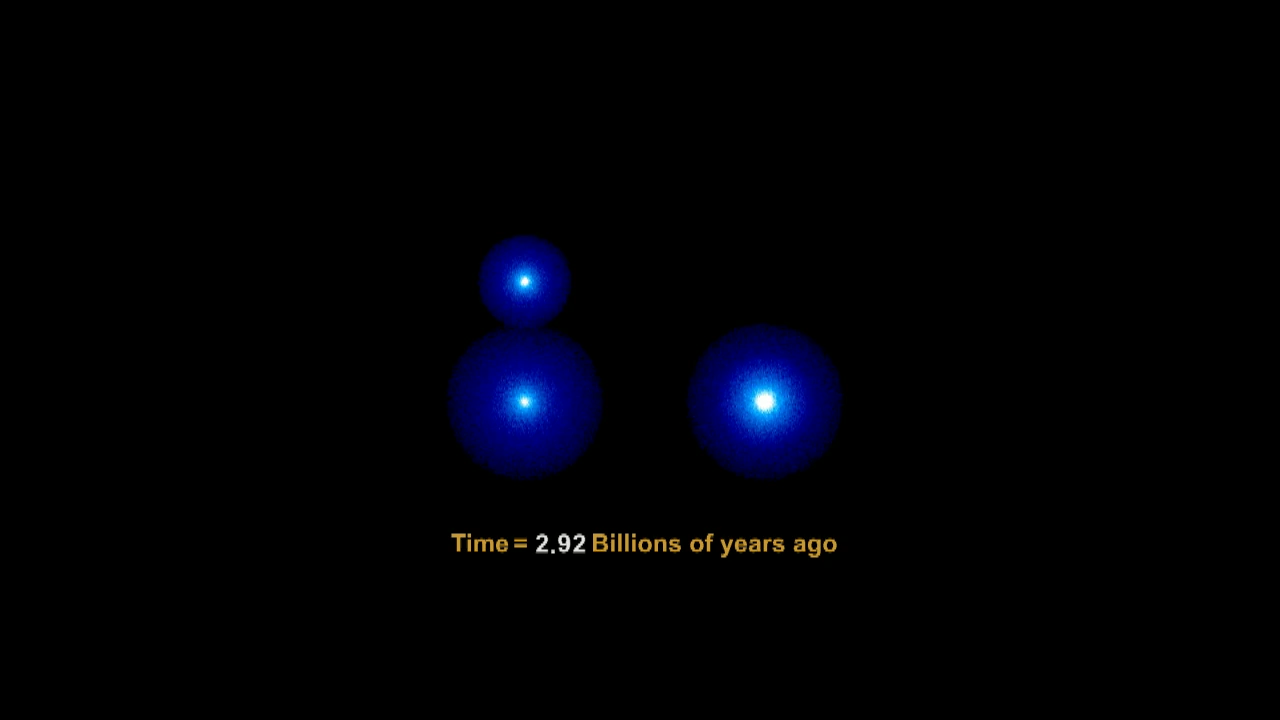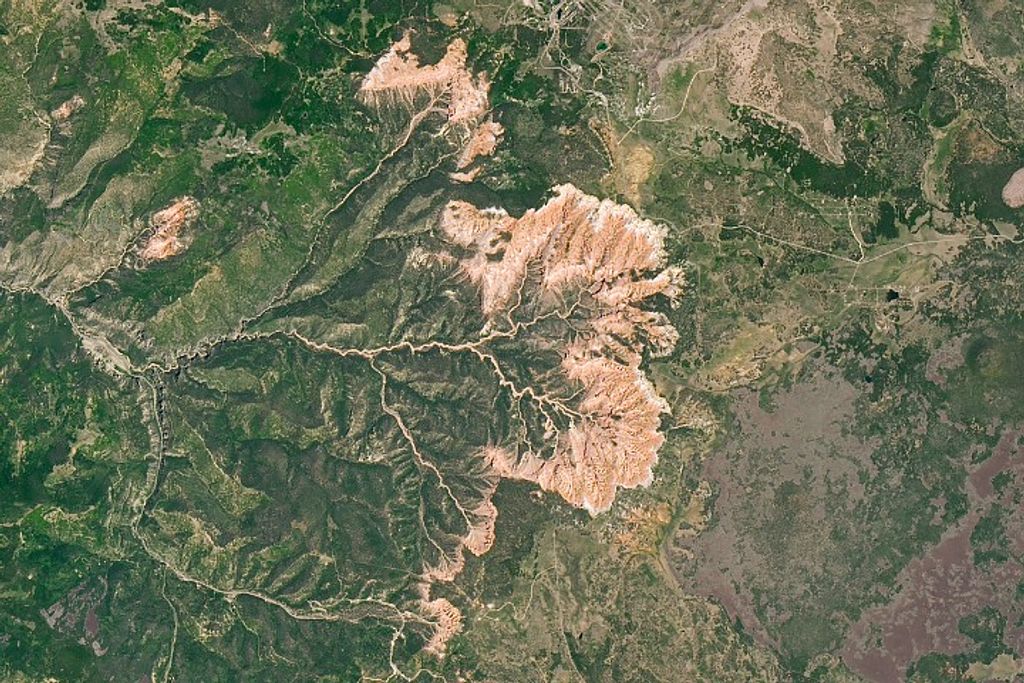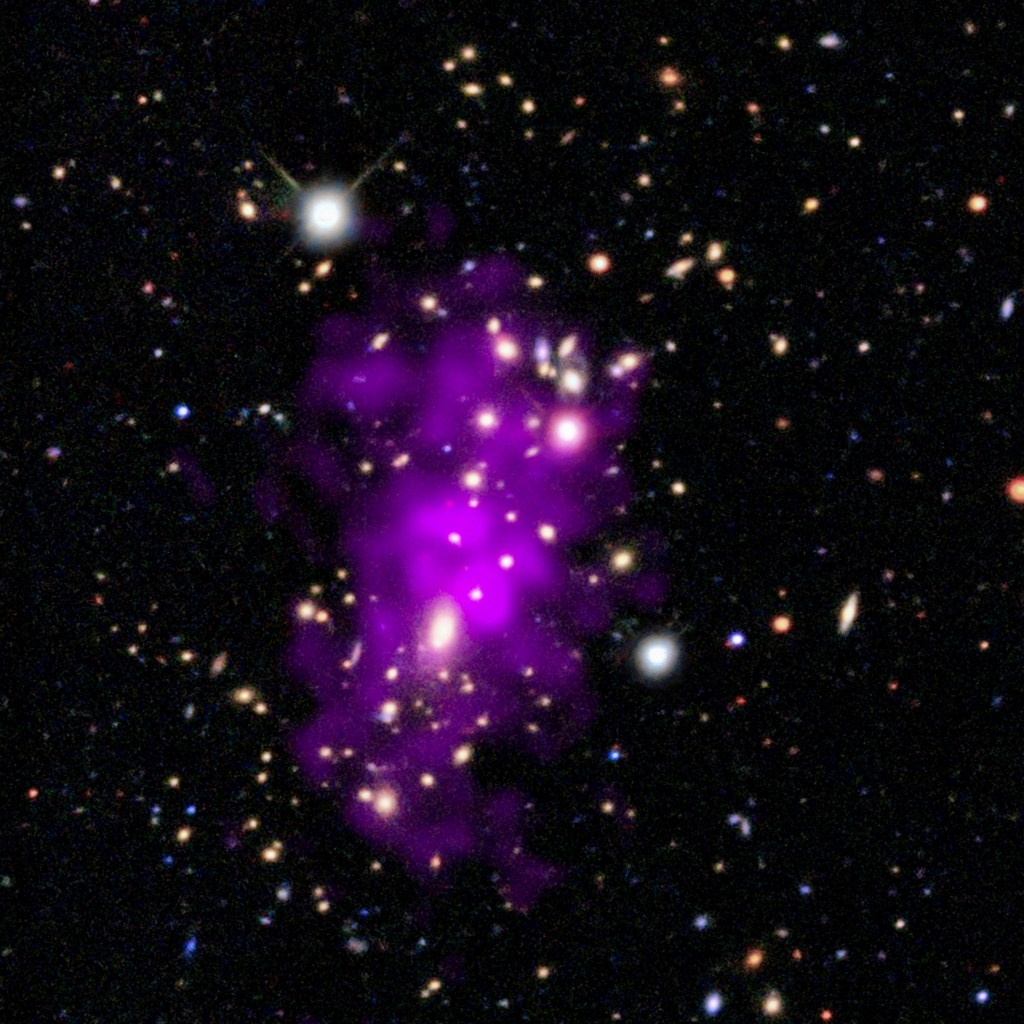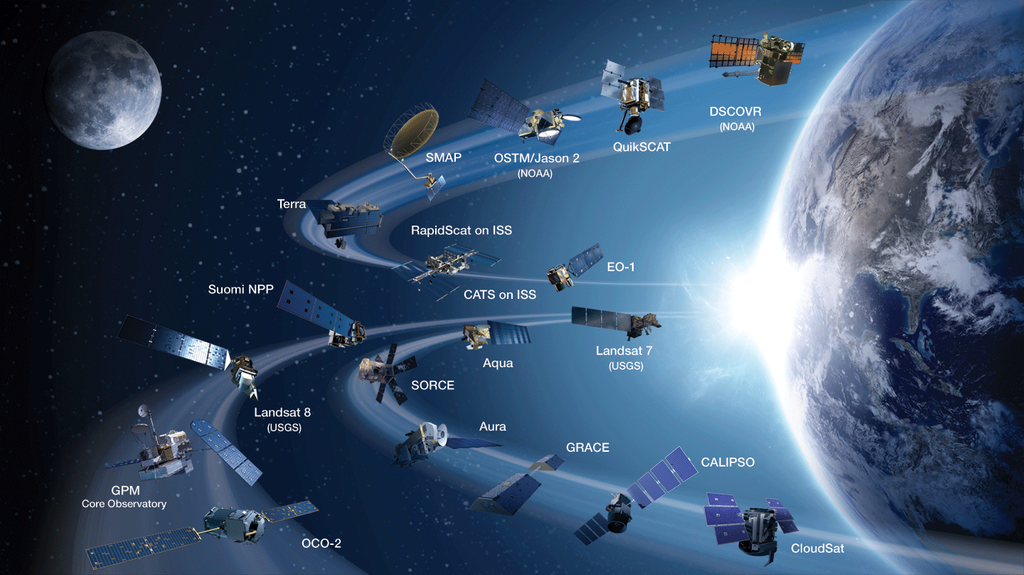1 min read
Cartwheel Galaxy

A rare and spectacular head-on collision between two galaxies appears in this NASA Hubble Space Telescope true-color image of the Cartwheel Galaxy, located 500 million light-years away in the constellation Sculptor. The new details of star birth resolved by Hubble provide an opportunity to study how extremely massive stars are born in large fragmented gas clouds.
The striking ring-like feature is a direct result of a smaller intruder galaxy - possibly one of two objects to the right of the ring - that careened through the core of the host galaxy. Like a rock tossed into a lake, the collision sent a ripple of energy into space, plowing gas and dust in front of it. Expanding at 200,000 miles per hour, this cosmic tsunami leaves in its wake a firestorm of new star creation. Hubble resolves bright blue knots that are gigantic clusters of newborn stars and immense loops and bubbles blown into space by exploding stars (supernovae) going off like a string of firecrackers.
The Cartwheel Galaxy presumably was a normal spiral galaxy like our Milky Way before the collision. This spiral structure is beginning to re-emerge, as seen in the faint arms or spokes between the outer ring and bulls-eye shaped nucleus. The ring contains at least several billion new stars that would not normally have been created in such a short time span and is so large (150,000 light-years across) our entire Milky Way Galaxy would fit inside.
About the Object
- R.A. PositionR.A. PositionRight ascension – analogous to longitude – is one component of an object's position.00h 37m 41.38s
- Dec. PositionDec. PositionDeclination – analogous to latitude – is one component of an object's position.-33° 42' 31.3"
- ConstellationConstellationOne of 88 recognized regions of the celestial sphere in which the object appears.Sculptor
- DistanceDistanceThe physical distance from Earth to the astronomical object. Distances within our solar system are usually measured in Astronomical Units (AU). Distances between stars are usually measured in light-years. Interstellar distances can also be measured in parsecs.500 million light-years
- DimensionsDimensionsThe physical size of the object or the apparent angle it subtends on the sky.150,000 light-years across
About the Data
- InstrumentInstrumentThe science instrument used to produce the data.HST>WFPC2
- Exposure DatesExposure DatesThe date(s) that the telescope made its observations and the total exposure time.October 16, 1994
- Object NameObject NameA name or catalog number that astronomers use to identify an astronomical object.Cartwheel Galaxy, ESO 350-40, AM0035-335
- Object DescriptionObject DescriptionThe type of astronomical object.Interacting Galaxies
- Release DateMay 15, 2007
- Science ReleaseHubble Finds Ring of Dark Matter
- Credit
Related Images & Videos

Hubble Finds Dark Matter Ring in Galaxy Cluster
This Hubble Space Telescope composite image shows a ghostly "ring" of dark matter in the galaxy cluster Cl 0024+17. The ring-like structure is evident in the blue map of the cluster's dark matter distribution. The map is superimposed on a Hubble image of the cluster. The ring is...

Searching for Dark Matter in a Galaxy Cluster
This rich galaxy cluster, catalogued as Cl 0024+17, is allowing astronomers to probe the distribution of dark matter in space. The blue streaks near the center of the image are the smeared images of very distant galaxies that are not part of the cluster. The distant galaxies...

Simulation of Two Galaxy Clusters Colliding
Simulation of two galaxy clusters colliding. As the two clusters smash together, the dark matter falls to the center of the combined cluster and then back out. The dark matter moves outward, it begins to slow down under the pull of gravity and piles up, forming a "ring" of...
Share
Details
Claire Andreoli
NASA’s Goddard Space Flight Center
Greenbelt, Maryland
claire.andreoli@nasa.gov































